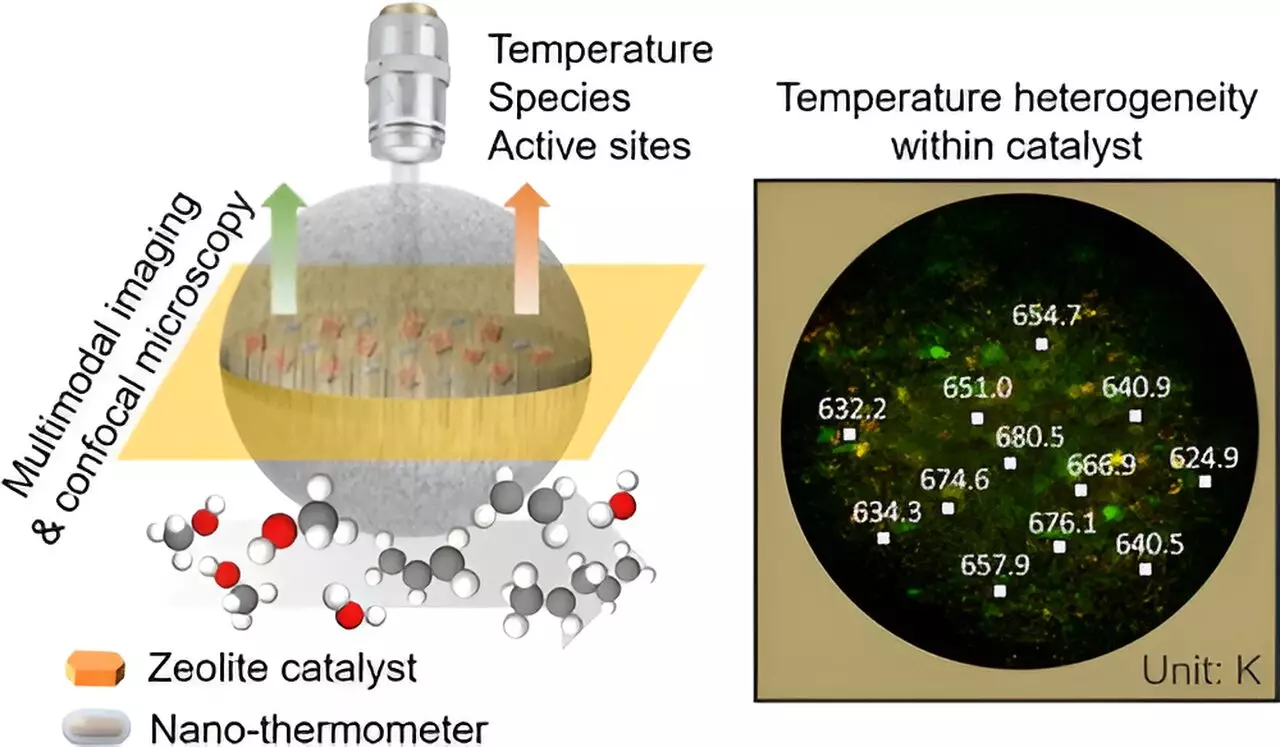Temperature is a critical parameter in chemical reactions, influencing both thermodynamics and reaction kinetics. Understanding the temperature distribution inside catalyst particles is crucial for determining reaction mechanisms and developing effective reaction kinetics. Recently, a research team at the Dalian Institute of Chemical Physics (DICP) developed a novel technique for measuring temperature distribution inside industrial zeolite catalyst particles.
Traditional methods such as thermocouples and infrared imaging can only measure surface temperature with limited spatial resolution. In response to this limitation, the researchers at DICP developed a three-dimensional spatiotemporal-resolved technique with a spatial resolution of 800 nm. This technique allowed for dynamic measurement of temperature distribution inside zeolite catalyst particles during methanol-to-olefins (MTO) reactions.
The research team implanted up-conversion nano-thermometers into industrial zeolite catalyst particles using a microfluidic chip, enabling high-temperature resistance and accurate temperature measurement. Additionally, they utilized confocal fluorescence and confocal infrared microscopy to investigate the effects of zeolite contents and particle size on temperature distribution inside the catalyst particles.
Through their research, the team discovered the impact of heterogeneous temperature distribution on the utilization of active sites and the evolution of reaction intermediates during MTO reactions. This insight provides valuable information for the design and optimization of industrial catalysts and catalysis.
Prof. Ye emphasized the significance of this new technique in enhancing our understanding of heat transfer within catalyst particles. By gaining insights into temperature distribution, researchers can develop more efficient catalysts and optimize catalytic processes for improved performance and productivity.
The development of a three-dimensional spatiotemporal-resolved technique for measuring temperature inside catalyst particles represents a significant advancement in the field of catalysis. This innovative approach not only provides valuable insights into reaction mechanisms but also offers new opportunities for the design and optimization of industrial catalysts.



Leave a Reply